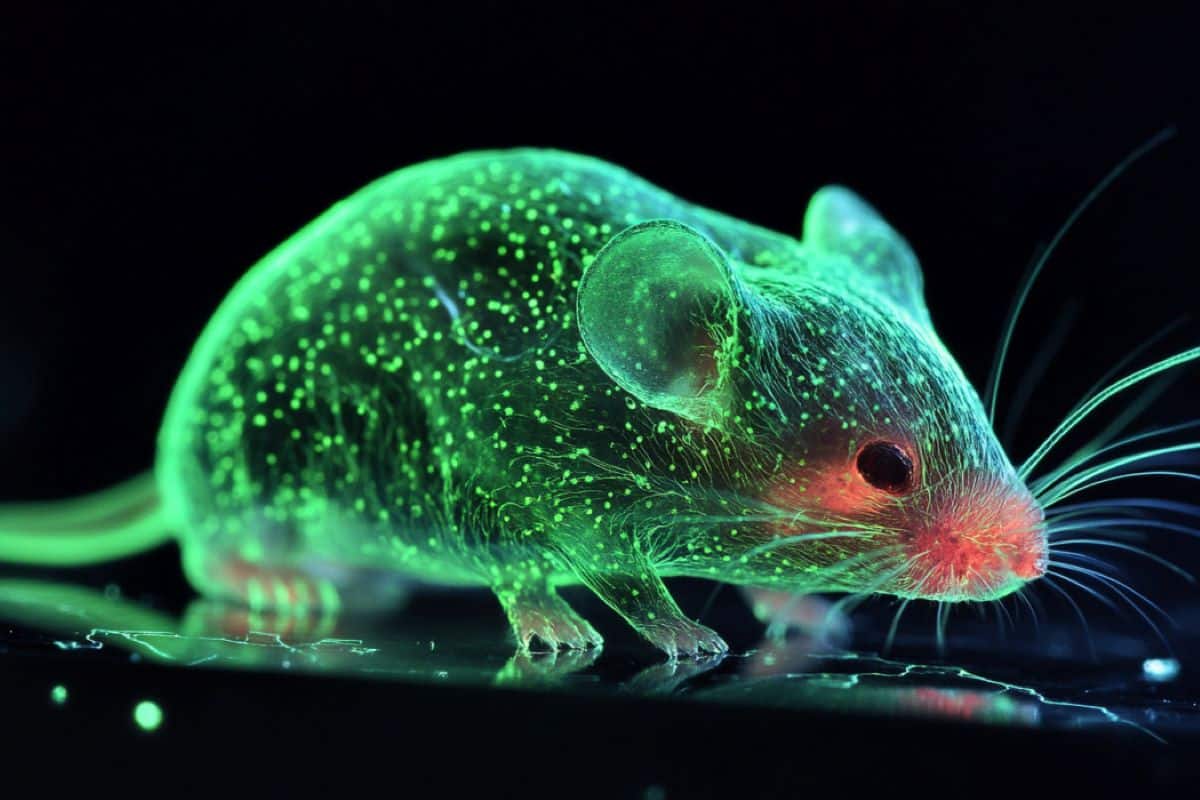Summary: Scientists have reprogrammed mouse cells into pluripotent stem cells using a gene from choanoflagellates, single-celled organisms related to animals. This breakthrough demonstrates that key genes driving stem cell formation existed in unicellular ancestors nearly a billion years ago.
The resulting stem cells were used to create a chimeric mouse, showcasing how ancient genetic tools can integrate with modern mammalian biology. This discovery redefines the evolutionary origins of stem cells and may inform regenerative medicine advancements.
Key Facts:
- A choanoflagellate gene replaced mouse Sox2 to reprogram cells into stem cells.
- The reprogrammed stem cells contributed to a chimeric mouse’s development.
- The findings suggest stem cell-related genes predate multicellular organisms.
Source: Queen Mary University of London
Published in Nature Communications, an international team of researchers has achieved an unprecedented milestone: the creation of mouse stem cells capable of generating a fully developed mouse using genetic tools from a unicellular organism, with which we share a common ancestor that predates animals.
This breakthrough reshapes our understanding of the genetic origins of stem cells, offering a new perspective on the evolutionary ties between animals and their ancient single-celled relatives.

In an experiment that sounds like science fiction, Dr Alex de Mendoza of Queen Mary University of London collaborated with researchers from The University of Hong Kong to use a gene found in choanoflagellates, a single-celled organism related to animals, to create stem cells which they then used to give rise to a living, breathing mouse.
Choanoflagellates are the closest living relatives of animals, and their genomes contain versions of the genes Sox and POU, known for driving pluripotency — the cellular potential to develop into any cell type — within mammalian stem cells. This unexpected discovery challenges a longstanding belief that these genes evolved exclusively within animals.
“By successfully creating a mouse using molecular tools derived from our single-celled relatives, we’re witnessing an extraordinary continuity of function across nearly a billion years of evolution,” said Dr de Mendoza.
“The study implies that key genes involved in stem cell formation might have originated far earlier than the stem cells themselves, perhaps helping pave the way for the multicellular life we see today.”
The 2012 Nobel prize to Shinya Yamanaka demonstrated that it is possible to obtain stem cells from “differentiated” cells just by expressing four factors, including a Sox (Sox2) and a POU (Oct4) gene.
In this new research, through a set of experiments conducted in collaboration with Dr Ralf Jauch’s lab in The University of Hong Kong / Centre for Translational Stem Cell Biology, the team introduced choanoflagellate Sox genes into mouse cells, replacing the native Sox2 gene achieving reprogramming towards the pluripotent stem cell state. To validate the efficacy of these reprogrammed cells, they were injected into a developing mouse embryo.
The resulting chimeric mouse displayed physical traits from both the donor embryo and the lab induced stem cells, such as black fur patches and dark eyes, confirming that these ancient genes played a crucial role in making stem cells compatible with the animal’s development.
The study traces how early versions of Sox and POU proteins, which bind DNA and regulate other genes, were used by unicellular ancestors for functions that would later become integral to stem cell formation and animal development.
“Choanoflagellates don’t have stem cells, they’re single-celled organisms, but they have these genes, likely to control basic cellular processes that multicellular animals probably later repurposed for building complex bodies,” explained Dr de Mendoza.
This novel insight emphasises the evolutionary versatility of genetic tools and offers a glimpse into how early life forms might have harnessed similar mechanisms to drive cellular specialisation, long before true multicellular organisms came into being, and into the importance of recycling in evolution.
This discovery has implications beyond evolutionary biology, potentially informing new advances in regenerative medicine. By deepening our understanding of how stem cell machinery evolved, scientists may identify new ways to optimise stem cell therapies and improve cell reprogramming techniques for treating diseases or repairing damaged tissue.
“Studying the ancient roots of these genetic tools lets us innovate with a clearer view of how pluripotency mechanisms can be tweaked or optimised,” Dr Jauch said, noting that advancements could arise from experimenting with synthetic versions of these genes that might perform even better than native animal genes in certain contexts.
About this genetics and stem cell research news
Author: Ilyana Zolotareva
Source: Queen Mary University of London
Contact: Ilyana Zolotareva – Queen Mary University of London
Image: The image is credited to Neuroscience News
Original Research: Open access.
“The emergence of Sox and POU transcription factors predates the origins of animal stem cells” by Alex de Mendoza et al. Nature Communications
Abstract
The emergence of Sox and POU transcription factors predates the origins of animal stem cells
Stem cells are a hallmark of animal multicellularity. Sox and POU transcription factors are associated with stemness and were believed to be animal innovations, reported absent in their unicellular relatives.
Here we describe unicellular Sox and POU factors. Choanoflagellate and filasterean Sox proteins have DNA-binding specificity similar to mammalian Sox2. Choanoflagellate—but not filasterean—Sox can replace Sox2 to reprogram mouse somatic cells into induced pluripotent stem cells (iPSCs) through interacting with the mouse POU member Oct4.
In contrast, choanoflagellate POU has a distinct DNA-binding profile and cannot generate iPSCs. Ancestrally reconstructed Sox proteins indicate that iPSC formation capacity is pervasive among resurrected sequences, thus loss of Sox2-like properties fostered Sox family subfunctionalization.
Our findings imply that the evolution of animal stem cells might have involved the exaptation of a pre-existing set of transcription factors, where pre-animal Sox was biochemically similar to extant Sox, whilst POU factors required evolutionary innovations.






